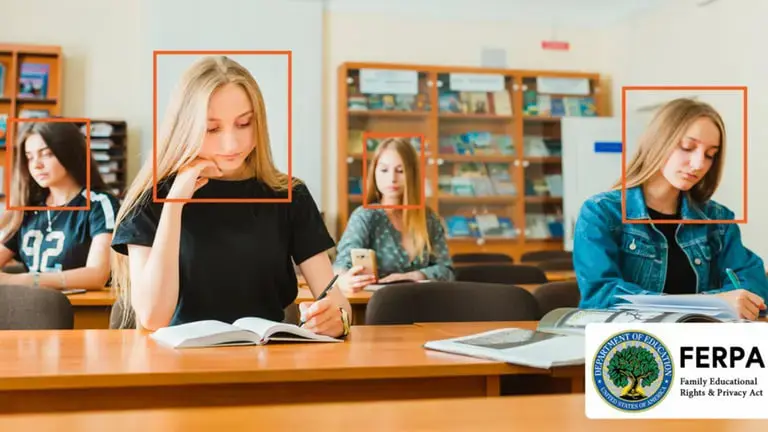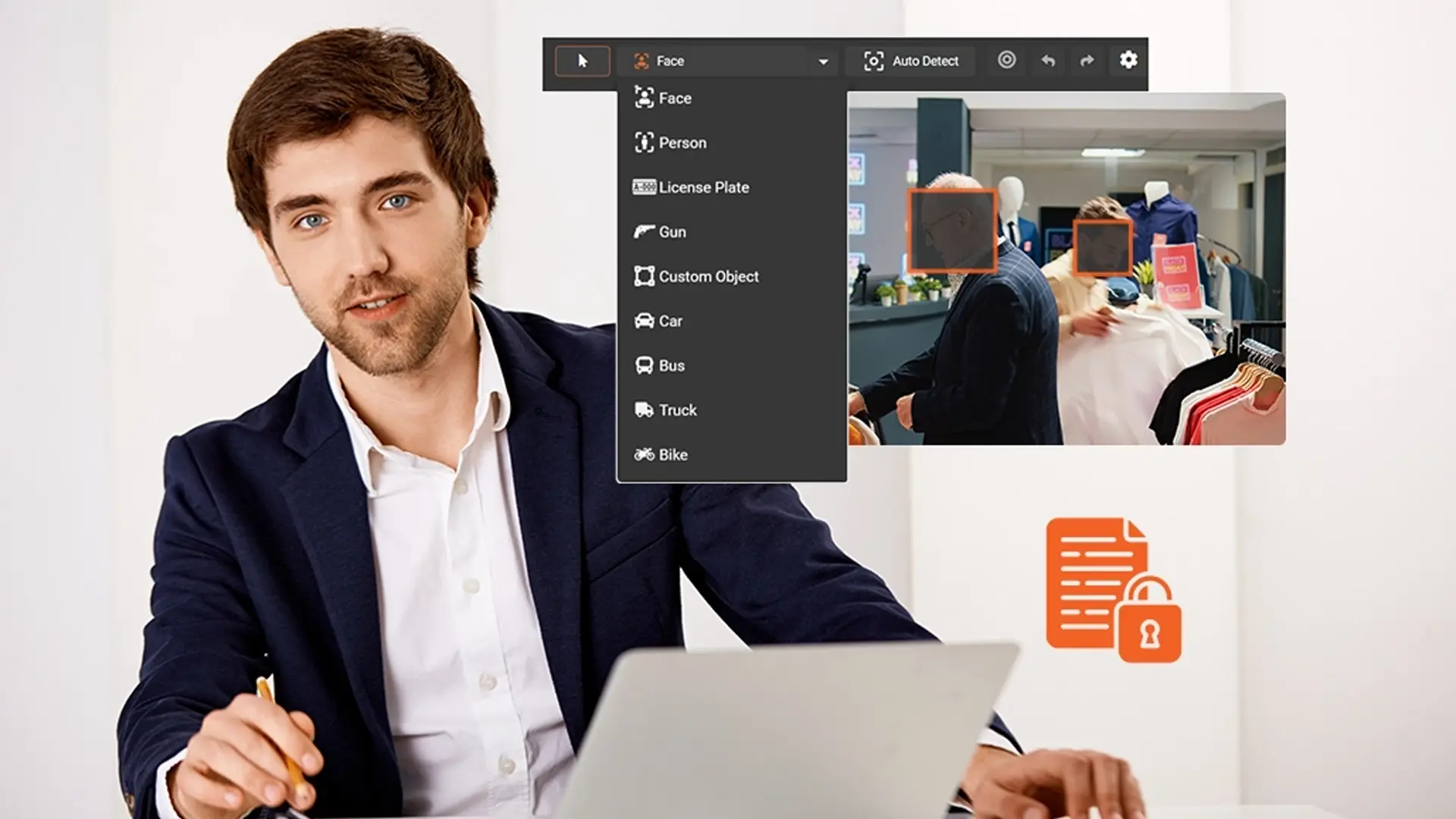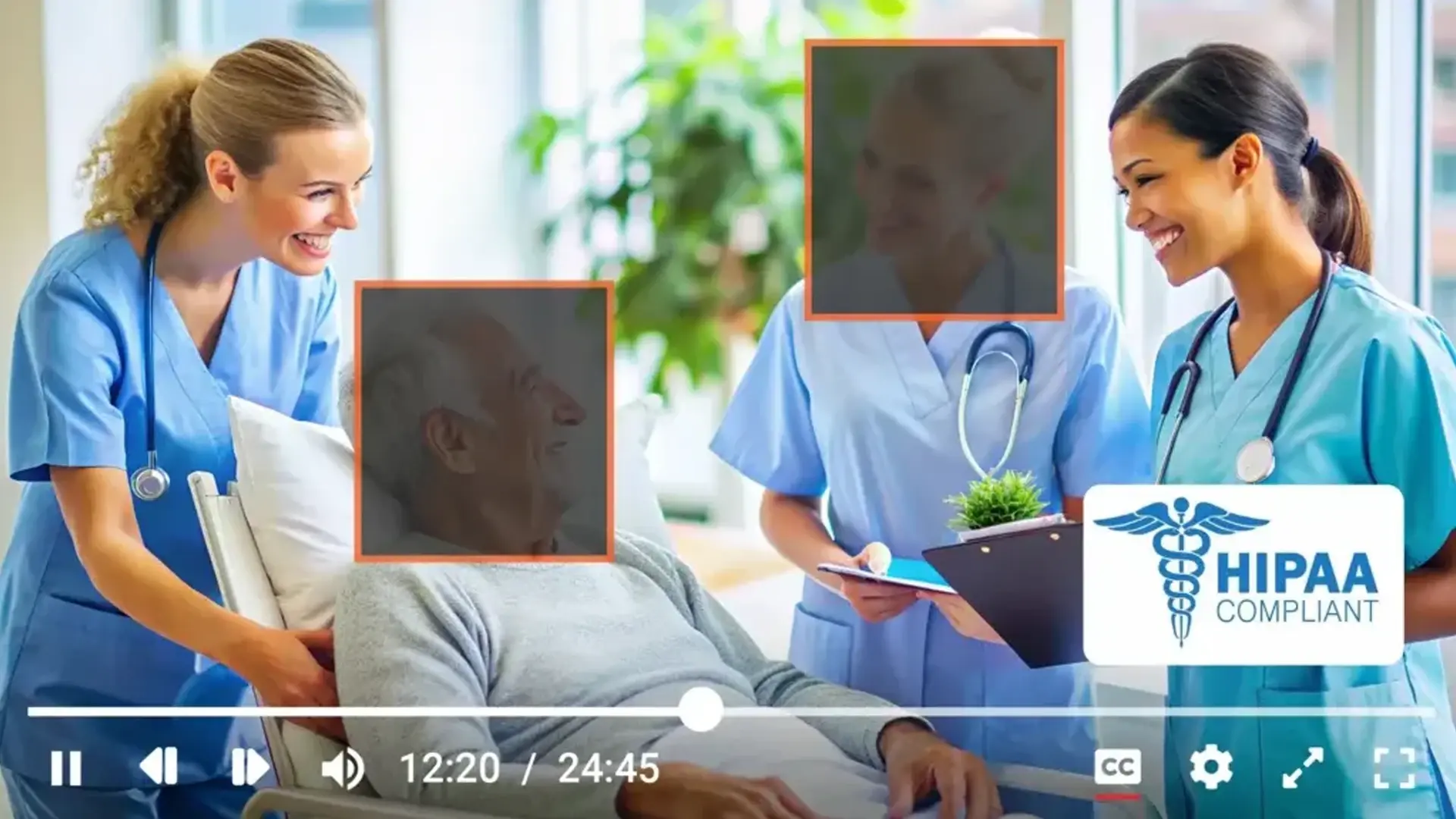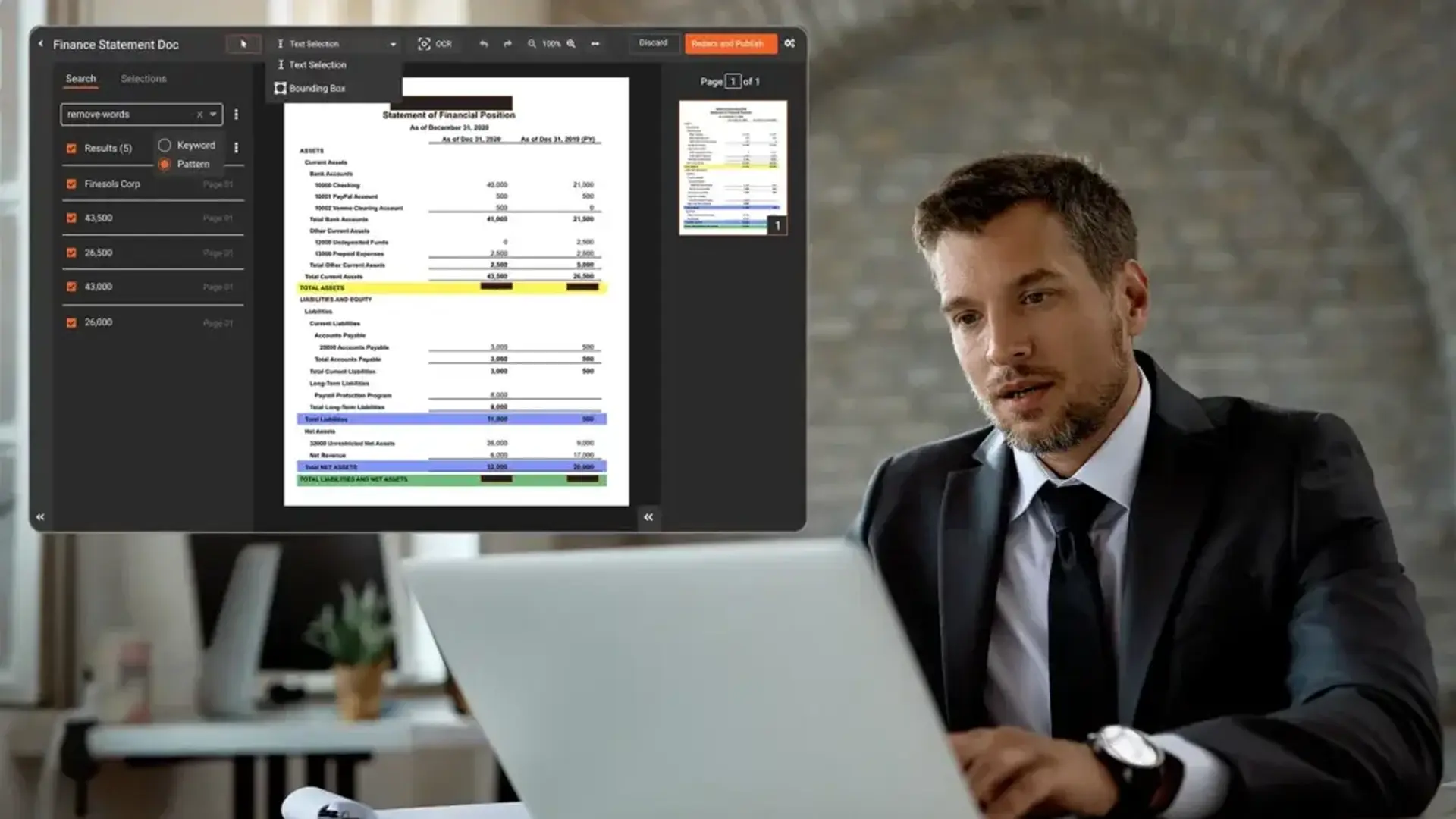Ensuring FERPA Compliance with Education Redaction Software
by Bassam Mazhar, Last updated: June 26, 2025

Explore how education redaction software can help you protect student data privacy and ensure compliance with FERPA compliance requirements.
This data, encompassing everything from personal identifiers to academic and health records of students, poses significant risks of exposure if not appropriately handled. With the high volume of records, the need for redaction software for education to protect student privacy and ensure compliance with the FERPA is becoming increasingly critical.
In this blog, we’ll explore how education redaction software helps institutions protect sensitive student information while complying with FERPA regulations. We'll also discuss the challenges institutions face in safeguarding student data and how FERPA redaction software provides a reliable and efficient solution.
But first, let's explore the basics.
What is Education Redaction Software
Education redaction software helps protect student data privacy by removing, obscuring, or masking sensitive information from educational documents, records, and other materials. It helps comply with regulations like FERPA and prevents unauthorized access to personal or confidential data with robust security protocols.
Understanding FERPA Compliance
Ensuring the privacy and security of student data is not just about compliance with regulations. It’s about preserving the trust of students and their families. This is where federal laws like FERPA come into play.
The Family Educational Rights and Privacy Act (FERPA) is a federal law governed by the US Department of Education that provides certain rights for parents regarding their children's education records.
It aims to protect the privacy of student educational records that may exist in any medium (electronic or digital files, including email, paper documents, fax documents, and conversations). According to FERPA, an education record is any record directly related to a student and maintained by an educational institution, agency, or a third party acting on its behalf.
These records may include personal identifiers and bio-demographic data such as date of birth, age, ethnicity, and gender, as well as academic information such as test scores, GPA, transcripts, and financial aid information.
Additionally, FERPA limits access to PII, requiring written consent from the student or guardian, except under certain conditions for legitimate educational purposes. The law does not limit access to student directory information, which can be disclosed without the student's written consent unless they choose to restrict its release.
Now that we have a basic understanding of FERPA, let's explore some of its compliance requirements.
FERPA Compliance Requirements
In order to ensure FERPA compliance with confidence, it's essential to have an overview of some of the key FERPA compliance requirements, which are as follows:
- Parents (or eligible students aged above 18) have the right to access and review their educational records, and educational institutions must provide access within 45 days of request.
- Schools must not disclose PII without written consent and must ensure secure data sharing upon request, protecting the privacy of individuals who are not the subject of the request.
- Educational institutions must implement robust security measures such as encryption and redaction, as well as secure login and access management controls to enable data protection.
- Schools can disclose directory information unless parents opt out. However, they must notify parents/students about their right to restrict disclosure.
Read through or explore other benefits of education redaction software.
With the increased influx and sharing of data across platforms and institutions, protecting student data privacy is a legal responsibility and crucial for maintaining trust between educational institutions, students, and their families. Let's explore the various types of sensitive student data that require safeguarding. Visit Student Privacy for more information on FERPA and FAQs.
Types of Student Data in Educational Institutions
Educational institutions handle a wide range of student data, including academic records and personal information. If exposed, this data can lead to privacy breaches or identity theft. Let’s explore the different types and formats of student data to develop effective strategies for managing them securely.
Personal Identifiers
These include non-directory personal identifiers such as social security numbers, student ID numbers, gender, ethnicity, and parent details. Such information is used for identification and administrative processes and forms part of student profiles and database records.
Academic Records
Academic records primarily include grades, standardized test scores, transcripts, class schedules, and attendance records. These records track academic performance and progress and are often shared with colleges, potential employers, or in legal settings when required.
Behavioral Information
Attendance records, disciplinary actions, and psychological evaluations form part of a student’s behavioral activity. These are used and shared to provide appropriate educational resources and accommodation for students with special needs.
Financial Information
Financial data comprises records of tuition payments, financial aid data, scholarships, and/or lunch program eligibility. These are managed and often shared for financial tracking, scholarship eligibility, and fee-related communications.
Post-graduation Data
Institutional research often uses alumni records, college acceptance, and employment details. Such details help track graduates' success and record information about their current statuses.
Challenges of Protecting Student Data Privacy
As educational institutions manage vast amounts of student data across multiple formats, be it text-based student records, audio conversations, surveillance videos, or images, protecting student data privacy and ensuring FERPA compliance has become more complex. Here are some key challenges. 
Data Scattered Across Platforms
With the rise of learning management systems (LMS), cloud-based solutions, and online learning tools, sensitive student information is stored across various platforms. Managing access control and ensuring data security has become a major challenge for educational institutions.
Hence, to mitigate risks, centralizing scattered data into a secure, centralized repository provided by redacting software is essential for consolidated storage, improved security, and improved access management.
Remote Learning and Data Sharing
The shift to remote learning during the pandemic further amplified the risk of data exposure. Video recordings of classes, online assignments, and data stored on third-party platforms increase the chances of unintentionally sharing protected information.
This necessitates secure sharing practices that require effective education redaction software with robust security protocols.
Lack of Centralized Data Management
Educational institutions store student data across multiple platforms, including learning management systems, administrative databases, health records, and cloud storage. This scattered data increases the risk of unintentional exposure and lacks a centralized data privacy policy.
Without a centralized system, tracking access and information retrieval becomes simple and the risk of unauthorized access is mitigated.
Manual Redaction Errors
Educational institutions must often redact sensitive information when sharing documents or video footage. However, manual redaction is error-prone, increasing the risk of accidental exposure to student PII and potential FERPA violations.
Consequences of Student Data Privacy Exposure
Did you know that a teacher’s contract was terminated for improperly sharing students' PII with a third party without consent, violating FERPA? Such breaches can lead to severe legal, financial, and reputational consequences, potentially impacting institutions and students.
The following are some of the consequences of non-compliance with FERPA:
Loss of Federal Funding
For public schools and many private institutions, compliance with FERPA is tied directly to their access to federal funding. Failing to adhere to FERPA regulations can result in the withdrawal of this critical financial support, hurting academic programs and essential services.
Legal Penalties and Lawsuits
Noncompliance with FERPA can open educational institutions to serious legal risks. If student data is improperly disclosed, the institution could face lawsuits from affected families and potentially from class-action cases, leading to hefty settlements.
Reputational Damage
In the age of heightened privacy awareness, a student data breach can devastate an institution's reputation. For education service providers, trust is of paramount importance. This loss of trust leads to a loss of confidence from parents, students, and the wider community.
Administrative Burden
Responding to a compliance failure is no small feat. Educational institutions should launch internal investigations to trace the breach's source, cooperate with regulatory bodies, and often overhaul their data management practices. This process demands substantial administrative time and financial resources.
Protecting against these consequences and safeguarding student data privacy necessitates implementing education redaction software in educational institutions.
What if you need to protect student data privacy in hundreds of documents or video files? Or what if you need to redact student PII from classroom videos, research data, or CCTV surveillance to effectively shield yourself against the consequences of FERPA violations and other student data privacy laws?
That’s where redaction software comes in. Let’s look at some situations requiring advanced education redaction software and its features.
Situations That Require Education Redaction Software
Some practical scenarios mandate the need to redact educational documents with automated education redaction software, such as the following:

Removing Sensitive Information from Student Records
Institutions must ensure all PII is removed when sharing student records with third parties like researchers or government agencies. Education redaction software can automatically scan documents and redact sensitive information such as student names, addresses, and grades before sharing.
This feature is especially valuable in research scenarios where anonymized data is necessary to protect student identities while enabling data analysis.
Redacting Faces in Classroom Videos
Educational institutions often record classroom sessions for remote learning or educational purposes. However, to protect students' privacy, students' faces or other identifiable features must be protected using FERPA redaction software when sharing these videos.
Protecting Research Data
Educational institutions conducting research may gather sensitive student data, including health records or academic performance. Any identifiable information must be redacted effectively before sharing or publishing this research.
Redacting CCTV Surveillance Footage
Schools and universities often use CCTV to monitor campus security. These recordings can capture sensitive data, including student movements and activities. When required to share this footage with law enforcement or external agencies, redacting student faces or identifiable details is essential for privacy.
Handling Online Learning Platforms
With the rise of remote learning, student interactions in virtual classrooms are increasingly recorded. Education redaction software can redact private student conversations or identifiable features from these recordings, allowing them to be securely shared for educational purposes.
How Education Redaction Software Protects Student Data and Ensures FERPA Compliance
Automated redaction software for education provides various benefits and features. It effectively enables the redaction of critical student data and other sensitive information across multiple scenarios. This software is crucial in helping educational institutions comply with FERPA obligations.
Redaction software is crucial in helping educational institutions protect student data privacy and comply with FERPA compliance requirements. 
Here are the key features and benefits of redaction software that protect student data privacy and ensure FERPA compliance.
Automatic PII Redaction with Education Redaction Software
As we have seen, student data comes in multiple file types and formats. Manually redacting student academic records, personal identifiers, health information, or financial data across video, audio, images, and documents is an uphill task.
Hence, artificial intelligence and machine learning capabilities of an automated education redaction software detects and redacts sensitive student data across multiple file types and formats, with additional capabilities like keyword redaction, pattern recognition, object detection and tracking.
Secure Storage and Management of Student Data
Advanced FERPA compliant software for education provides a centralized repository where you can securely store, organize, manage, and keep track of all your student data, whether in the form of audio, video, images, or documents.
Advanced features like single sign-on and granular access controls help you manage user access. The former enhances user convenience and security by reducing the number of login prompts. At the same time, the latter enables you to define user permissions and establish access and editing rights across your educational institution for managing student data.
Part of the FERPA compliance requirements requires that an education record cannot be destroyed if there are outstanding requests to inspect or review it.
A scalable archiving solution, such as FERPA redaction software, offers configurable data retention for data management and robust security features, including industry-standard encryption, multi-factor authentication, and SSL/TLS controls.
These measures help meet FERPA’s storage and security requirements.
Add another layer of security features like chain of custody, which allows you to track who accessed student data and when. These features help you further cement FERPA compliance by adding multiple layers of security to protect student privacy.
Support for Multiple Media Formats
Educational institutions collect and store the different types of data in various formats, making it crucial to protect student privacy across all file types to ensure FERPA compliance.
Let’s say you have student data stored in multiple media formats. Whether it’s video recordings of classrooms and faces that need to be hidden, voice recordings of school events including spoken PII, images of student ID cards, or documents of educational records – they all require redaction.
Therefore, educational redaction software that ensures all student data across multiple media formats remains protected is essential. A comprehensive, AI-powered automated redaction software that supports audio, video, images, and documents can help you achieve this task, and that too in bulk!
Redact Large Data Volumes in Bulk
With millions of students enrolled across educational institutions in the US, vast volumes of student data need to be managed. Sharing or using this information will require redacting multiple media files, but it does not have to be time-consuming and cumbersome.
AI-powered education redaction software has batch-processing capabilities to perform bulk redaction of hundreds of media files consistently. Such software additionally streamlines the process, reducing the risk of human error and ensuring that all sensitive information is thoroughly removed or obscured.
For instance, redaction software can automatically detect and redact student faces in multiple videos when processing CCTV footage of campus activities.
Ensure FERPA Compliance with VIDIZMO FERPA Redaction Software
U.S. educational institutions manage large volumes of sensitive student data, making them vulnerable to student privacy exposure and FERPA violations. FERPA mandates strict regulations on handling and sharing student records to protect personally identifiable information (PII).
As educational institutions continue to navigate the complexities of student data privacy, leveraging redaction software becomes critical for compliance and trust.
Automated education redaction software provides a comprehensive solution to this problem by automating the process of removing sensitive data across various media formats, including video, audio, images, and documents.
Implementing advanced software like VIDIZMO Redactor helps institutions effectively maintain FERPA compliance. With automated redaction, pattern recognition, and bulk processing, educational institutions can efficiently safeguard student privacy while avoiding the risk of consequences.
Additionally, VIDIZMO Redactor enhances data security and compliance through centralized data management, industry-standard encryption, granular access control, and chain of custody tracking, ensuring robust protection of sensitive student information. 
How Education Redaction Software Ensures FERPA Compliance and Data Security
In conclusion, Education Redaction Software is an essential tool for protecting student privacy and ensuring compliance with FERPA. It automatically redacts sensitive student data across various formats, including documents, videos, and audio files, helping educational institutions safeguard personally identifiable information (PII) and maintain data security. By reducing manual errors and increasing efficiency, this software provides an effective solution to the challenges of managing and protecting student data.
Leveraging education redaction software is crucial for educational institutions looking to improve their data protection and FERPA compliance. Explore our redacting software today with a free trial and experience how easy it is to secure student data while ensuring compliance.
People Also Ask
What is Education Redaction Software, and how does it work?
Education Redaction Software is a tool designed to protect sensitive student data by automatically identifying and removing or obscuring personally identifiable information (PII), health records, academic records, and other confidential data. It helps educational institutions ensure compliance with privacy regulations like FERPA while safeguarding student privacy.
How does Education Redaction Software help with FERPA compliance?
Education Redaction Software helps ensure FERPA compliance by automatically identifying and redacting sensitive student data from educational records, such as personal identifiers and academic performance. This software ensures that data shared externally is devoid of PII, maintaining compliance with FERPA's requirements for protecting student privacy.
Why is Education Redaction Software important for protecting student data privacy?
Education Redaction Software is essential for protecting student data privacy as it prevents unauthorized access to sensitive information. By automating the redaction process, it helps educational institutions safeguard students' personal details, academic records, and health information, reducing the risk of exposure or non-compliance with privacy laws.
Can Education Redaction Software be used for video and audio files?
Yes, Education Redaction Software can be used to redact sensitive information from not only documents but also video and audio files. This includes redacting student faces from classroom recordings or audio files containing personal identifiers and ensuring that all media formats are compliant with FERPA.
How does Education Redaction Software improve efficiency for educational institutions?
Education Redaction Software improves efficiency by automating the process of redacting sensitive information across various formats, including documents, videos, and audio files. This eliminates the time-consuming and error-prone manual redaction process, allowing institutions to handle large volumes of student data securely and quickly.
What types of student data should be redacted using Education Redaction Software?
Education Redaction Software is used to redact non-directory information such as Social Security numbers, student ID numbers, academic records, financial data, behavioral information, and health records. Redacting these sensitive details ensures compliance with privacy regulations and protects student privacy.
How does Education Redaction Software handle multiple file formats?
Education Redaction Software supports various file formats, including PDFs, Word documents, images, audio files, and video recordings. It ensures that all sensitive student data across different media types is redacted, maintaining security and FERPA compliance across the institution's data.
Can Education Redaction Software be used for remote learning data?
Yes, Education Redaction Software is crucial for remote learning data. As remote classes generate video recordings, online assignments, and virtual interactions, the software ensures that any sensitive student information shared across platforms is appropriately redacted to protect privacy.
What are the benefits of using Education Redaction Software for data security?
The benefits of using Education Redaction Software for data security include automated redaction of sensitive information, improved FERPA compliance, enhanced data protection, reduced human error, and secure data sharing. These features help prevent unauthorized access and ensure institutions can manage student records securely.
Is Education Redaction Software customizable for different educational institutions?
Yes, Education Redaction Software is customizable for different educational institutions. It allows institutions to configure redaction settings based on their specific needs, such as redacting specific types of data or adapting to different file formats, ensuring that the software meets compliance and security standards effectively.
Jump to
You May Also Like
These Related Stories

Why Redacting Software Matters for Your Business Success in 2025

Protecting Patient Privacy with Video Healthcare Redaction Software




No Comments Yet
Let us know what you think